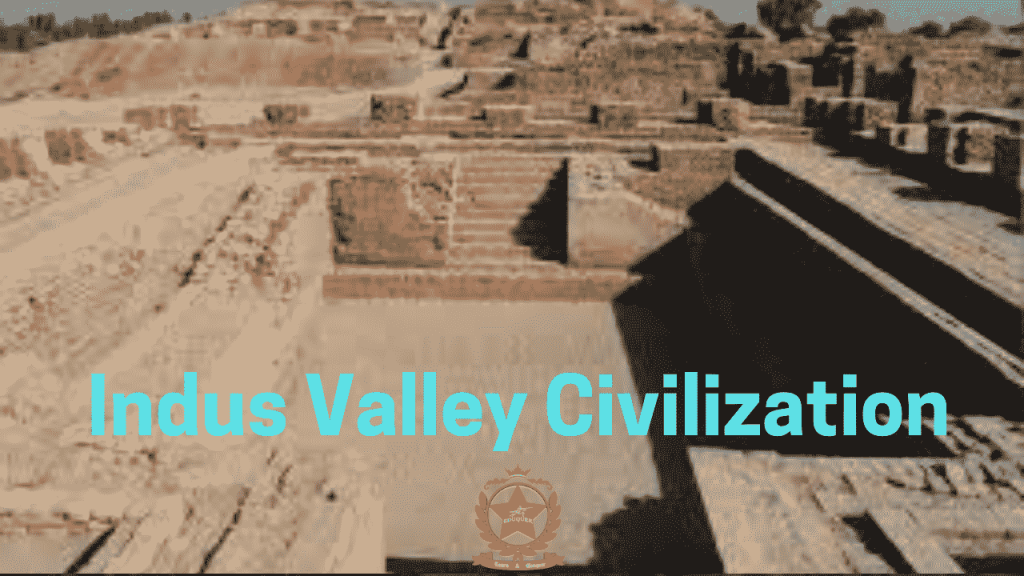Table of Contents
Introduction
Around 3500 BC the first cities developed in Mesopotamia, followed shortly afterwards by similar developments in Egypt and India, and a little later in China. Each of these urban literate civilisations was centred on a major river valley which had the agricultural potential needed to support a dense population. These civilisations undoubtedly developed independently of one another; and yet the similarities between them are both numerous and striking, marking all of them off from the farming communities out of which they sprang. One of their most obvious common features was the large cities. The name ‘India’ goes back to the earliest civilisation in India, the Indus civilisation, though no one had heard of such a civilisation till the third decade of the twentieth century. However, in the 1920s, two ancient sites in the Indus valley—Harappa and Mohenjodaro—were excavated. These cities brought to light a civilisation, which was at first called the ‘Indus Valley civilisation’, but later termed as the ‘Indus civilisation’ due to the discovery of more and more sites far away from the actual river valley. Alternatively it has also come to be called the ‘Harappan civilisation’ after the name of its first discovered site.
- The history of India begins with the birth of the Indus Valley Civilization (IVC), also known as Harappan Civilization.
- It flourished around 2,500 BC, in the western part of South Asia, in contemporary Pakistan and Western India.
- The Indus Valley was home to the largest of the four ancient urban civilizations of Egypt, Mesopotamia, India and China.
- In 1920s, the Archaeological Department of India carried out excavations in the Indus valley wherein the ruins of the two old cities, viz. Mohenjodaro and Harappa were unearthed.
- In 1924, John Marshall, Director-General of the ASI, announced the discovery of a new civilisation in the Indus valley to the world.
Important Sites
| Important Sites | ||||
| Site | Excavated by | Year | Location | Important Findings |
| Harappa | Daya Ram Sahini | 1921 | Situated on the bank of river Ravi in Montgomery district of Punjab (Pakistan). |
|
| Mohenjodaro | R.D Banerjee | 1922 | Situated on the Bank of river Indus in Larkana district of Punjab (Pakistan). |
|
| Sutkagendor | Stein | 1929 | In southwestern Balochistan province, Pakistan on Dast river |
|
| Chanhudaro | N.G Majumdar | 1931 | Sindh on the Indus river |
|
| Amri | N.G Majumdar | 1935 | On the bank of Indus river |
|
| Kalibangan | Ghose | 1953 | Rajasthan on the bank of Ghaggar river |
|
| Lothal | R.Rao | 1953 | Gujarat on Bhogva river near Gulf of Cambay |
|
| Surkotada | J.P Joshi | 1964 | Gujarat |
|
| Banawali | R.S Bisht | 1974 | Hisar district of Haryana |
|
| Dholavira | R.S Bisht | 1985 | Gujarat in Rann of Kachchh |
|
|
Rakhigarhi |
Amarendra Nath | 1997 |
Haryana’s Hisar |
|
Go through the MCQ of this chapter for complete preparetion- read here
Salient Features
Town Planning
- Harappan civilization was characterized by its urban planning.
- Each of Harappa and Mohenjodaro had its own citadel or acropolis, which was likely held by ruling class members.
- Each city has a lower town with brick homes that were occupied by the common people beneath the citadel.
- The grid method was used to arrange the dwellings in the city.
- Granaries were an essential feature of Harappan towns.
- The usage of burnt bricks in Harappan towns is remarkable.
- The Great Bath, which is 39 feet long, 23 feet wide, and 8 feet deep, is Mohenjodaro’s most significant public space.
- At either end, a flight of steps leads to the surface. There are dressing rooms on the side. The Bath’s floor was constructed of burned bricks.
- Water was drawn from a large well in another room, and a drain was accessible from one corner of the Bath. It was probably used for ceremonial bathing.
- A granary spanning 150 feet long and 50 feet wide is the biggest structure in Mohenjodaro.
- There are six granaries in Harappa.
- Mohenjodaro’s drainage system was rather outstanding.
- In Kalibangan many houses had their wells.
- The entire community was fortified at locations like Dholavira and Lothal (Gujarat), and portions of the town were also protected by walls.
Economic Life
- Numerous seals, uniform script, and regulated weights and measures across a large area demonstrates the importance of trade in the lives of the Indus people.
- Stone, metal, shell, and other materials were traded in large scale by the Harappans.
- The trade was conducted through barter.
- They practiced navigation along the Arabian Sea’s shore.
- They had established a commercial colony in northern Afghanistan, which aided commerce with Central Asia.
- They also traded with people living around the Tigris and Euphrates rivers.
- The Harappans engaged in long-distance lapis lazuli trading, which may have boosted the ruling class’s social standing.
Agriculture
- Harappan communities located in river plains, generated enough foodgrains.
- Wheat, barley, rai, peas, sesame, lentil, chickpea, and mustard were among the crops grown.
- Millets discovered in Gujarat. While rice was used infrequently.
- The Indus people were the first to cultivate cotton.
- The bull was recognized, according to representations on seals and terracotta art, and archaeologists conclude that oxen were utilised for ploughing.
- The majority of Harappan sites are in semi-arid regions where irrigation was likely necessary for cultivation.
- Canal traces have been discovered in Afghanistan’s Shortughai Harappan site, but not in Punjab or Sindh.
- Although the Harappans were farmers, they also raised animals on a massive scale.
- A shallow level of Mohenjodaro and a dubious ceramic piece from Lothal provide evidence of the horse. In any event, Harappan civilization was not centred on horses.
Social Life
- To comprehend the Harappan social life, there is a wealth of evidence. Both men and women wore two pieces of fabric, one for the upper body and the other for the lower body.
- Both men and women wore beads.
- Women wore bangles, bracelets, fillets, girdles, anklets, ear-rings, and finger rings, among other things.
- Gold, silver, copper, bronze, and semi-precious stones were used to create these decorations.
- Cosmetic usage was widespread. At Mohenjodaro, several household items made of pottery, stone, shells, ivory, and metal have been discovered.
- Copper is used to make spindles, needles, combs, fish hooks, and knives.
- Fishing was a popular hobby, while bullfighting and hunting were also popular.
- Axes, spearheads, daggers, bows, and arrows made of copper and bronze were among the many weapons on display.
Social Institutions
- Some archaeologists believe that Harappan culture had no rulers and that everyone was treated equally.
- In the Indus valley, just a few written items uncovered, and academics have yet to decode the Indus script.
- As a result, determining the nature of the Indus Valley Civilization’s state and institutions is challenging.
- Harappan site have no temples been discovered.
- Harappa was most likely dominated by a merchant class.
- Archaeological documents may not give obvious answers when looking for a power centre or portrayals of powerful people.
Art and Crafts
- The Harappans were well-versed in the production and application of bronze.
- Copper was acquired from Rajasthan’s Khetri copper mines, while tin was likely imported from Afghanistan.
- Several artefacts have been discovered with textile imprints.
- Large brick structures indicate that brick-laying was a valuable skill. This also confirms the existence of a mason class.
- The Harappans were known for their boat-building, bead-making, and seal-making skills. Terracotta production was also a significant skill.
- Goldsmiths created silver, gold, and precious stone jewellery.
- The potter’s wheel was in full swing, and the Harappans were producing their own distinctive glossy and gleaming pottery.
Religion
- Several clay figures of women were discovered at Harappa. A plant is represented sprouting out of a woman’s embryo in one figure.
- the Harappans saw the earth as a fertility goddess, worshipping her in the same way that the Egyptians revered the Nile goddess Isis.
- The masculine god is shown as a seal with three-horned heads seated in the pose of a yogi.
- This god sits on a throne surrounded by elephants, tigers, rhinoceros, and buffalo.
- Two deer emerge at feet of Pushupati.
- There have been several stone phallus and female sex organ symbols discovered.
- Trees and animals were highly revered by the Indus people.
- The one-horned unicorn, which is related to the rhinoceros, is the most significant, while the humped bull is the second most important.
- Numerous amulets have also been discovered.
Script
- The Harappan script is currently being deciphered in its entirety.
- There are between 400 and 600 signs, with 40 or 60 being fundamental and the rest being modifications.
- The majority of the script was written from right to left.
- The boustrophedon approach — writing in the opposite way in alternate lines,
Burial Methods
- Cemeteries unearthed near towns like Mohenjodaro, Harappa, Kalibangan, Lothal, and Rupar shed information on the Harappans’ burial habits.
- At Mohenjodaro, both complete burial and post-cremation burial were prevalent.
- The burial hole at Lothal was lined with charred bricks, indicating that coffins were used. At Harappa, wooden coffins were also discovered.
- Pot burials was discovered in Lothal, occasionally with pairs of bones.
Decline
- There is no universal agreement on what caused the Harappan civilization to fall. Several hypotheses have been proposed.
- Natural disasters like repeated floods, river drying up, diminishing soil fertility owing to overexploitation, and periodic earthquakes may have contributed to the downfall of the Harappan towns.
- The invasion of Aryans, according to some experts.
- Human bones discovered crowded together at Mohenjodaro further suggest that the city was attacked by strangers.
- The Aryans possessed stronger weaponry and fast horses, which may have helped them to conquer this region.
Go through the MCQ of this chapter for complete preparetion- read here

